Mahler-notes
advertisement
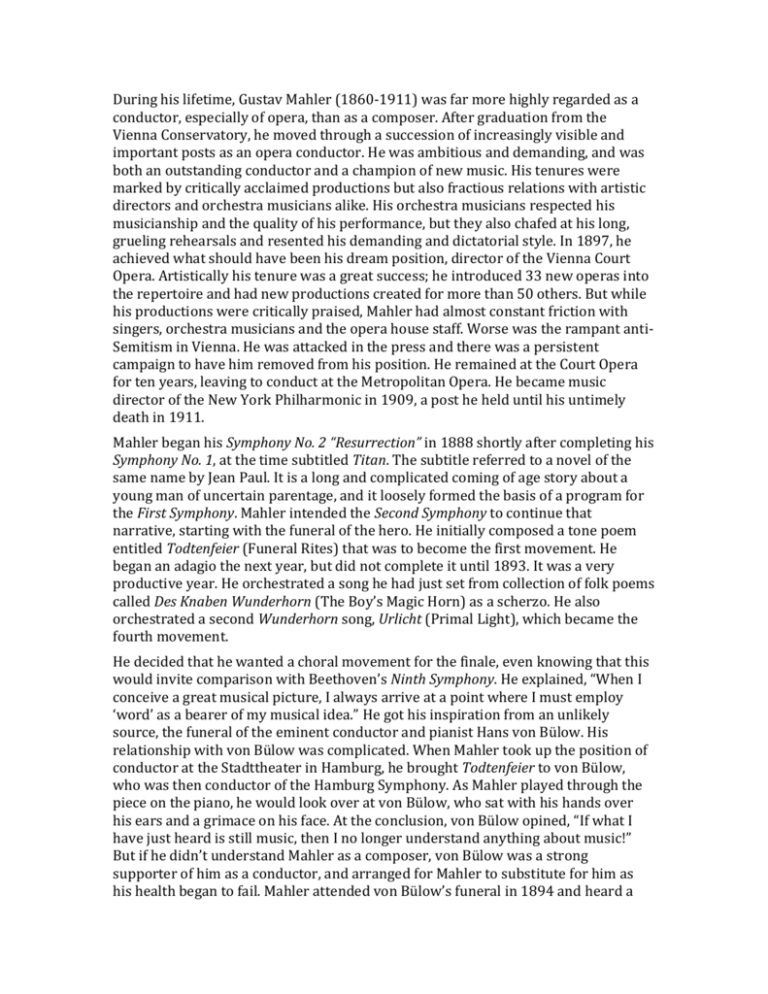
During his lifetime, Gustav Mahler (1860-1911) was far more highly regarded as a conductor, especially of opera, than as a composer. After graduation from the Vienna Conservatory, he moved through a succession of increasingly visible and important posts as an opera conductor. He was ambitious and demanding, and was both an outstanding conductor and a champion of new music. His tenures were marked by critically acclaimed productions but also fractious relations with artistic directors and orchestra musicians alike. His orchestra musicians respected his musicianship and the quality of his performance, but they also chafed at his long, grueling rehearsals and resented his demanding and dictatorial style. In 1897, he achieved what should have been his dream position, director of the Vienna Court Opera. Artistically his tenure was a great success; he introduced 33 new operas into the repertoire and had new productions created for more than 50 others. But while his productions were critically praised, Mahler had almost constant friction with singers, orchestra musicians and the opera house staff. Worse was the rampant antiSemitism in Vienna. He was attacked in the press and there was a persistent campaign to have him removed from his position. He remained at the Court Opera for ten years, leaving to conduct at the Metropolitan Opera. He became music director of the New York Philharmonic in 1909, a post he held until his untimely death in 1911. Mahler began his Symphony No. 2 “Resurrection” in 1888 shortly after completing his Symphony No. 1, at the time subtitled Titan. The subtitle referred to a novel of the same name by Jean Paul. It is a long and complicated coming of age story about a young man of uncertain parentage, and it loosely formed the basis of a program for the First Symphony. Mahler intended the Second Symphony to continue that narrative, starting with the funeral of the hero. He initially composed a tone poem entitled Todtenfeier (Funeral Rites) that was to become the first movement. He began an adagio the next year, but did not complete it until 1893. It was a very productive year. He orchestrated a song he had just set from collection of folk poems called Des Knaben Wunderhorn (The Boy’s Magic Horn) as a scherzo. He also orchestrated a second Wunderhorn song, Urlicht (Primal Light), which became the fourth movement. He decided that he wanted a choral movement for the finale, even knowing that this would invite comparison with Beethoven’s Ninth Symphony. He explained, “When I conceive a great musical picture, I always arrive at a point where I must employ ‘word’ as a bearer of my musical idea.” He got his inspiration from an unlikely source, the funeral of the eminent conductor and pianist Hans von Bülow. His relationship with von Bülow was complicated. When Mahler took up the position of conductor at the Stadttheater in Hamburg, he brought Todtenfeier to von Bülow, who was then conductor of the Hamburg Symphony. As Mahler played through the piece on the piano, he would look over at von Bülow, who sat with his hands over his ears and a grimace on his face. At the conclusion, von Bülow opined, “If what I have just heard is still music, then I no longer understand anything about music!” But if he didn’t understand Mahler as a composer, von Bülow was a strong supporter of him as a conductor, and arranged for Mahler to substitute for him as his health began to fail. Mahler attended von Bülow’s funeral in 1894 and heard a choral setting of Friedrich Gottlieb Klopstock’s poem Auferstehen (Resurrection). He wrote to a friend, “It struck me like a thunderbolt, and everything stood clear and vivid before my soul.” In the end, he set only the first two verses of Klopstock’s poem, supplying the balance of the text himself. While Mahler’s text reflects that somewhat overheated German romanticism, it is surprisingly effective and affecting. Mahler was a superb orchestrator, and he had a wonderful gift for crafting music that reflected both the sense and the emotional content of the text. Consider the third choral entrance, Was enstanden ist, which contains the central tenet of the work – “All that has come into being shall pass away. But what passes away shall be reborn.” The phrase opens quietly and mysteriously, like eerie chanting in the darkness, but in a few short measures has blossomed into a magnificent affirmation of faith, with full chorus and every brass instrument that Mahler could lay his hands on. The Second Symphony was premiered in 1895 to great critical acclaim, one of the very few successes his compositions achieved during his lifetime. Mahler provided three detailed programs for the Second Symphony, all basically presenting the same ideas. Musicologist and Mahler expert Gilbert Kaplan has combined the three programs to produce the consensus version appended below. Of the program, Mahler wrote, “The original aim of this work was never to describe an event in detail; rather it concerns a feeling. Its spiritual message is clearly expressed in the words of the final chorus . . . I leave the interpretation of details to the imagination of each individual listener.” While Mahler later withdrew the notes, saying that a work of music should require no explanation, they do provide a fascinating insight into Mahler’s thinking at the time and the feelings that were foremost in his mind. Movement I We stand by the coffin of a person well loved. His whole life, his struggles, his passions, his sufferings and his accomplishments on earth once more for the last time pass before us. And now, in this solemn and deeply stirring moment, when the confusions and distractions of everyday life are lifted like a hood from our eyes, a voice of awe-inspiring solemnity chills our heart—a voice that, blinded by the mirage of everyday life, we usually ignore: “What next? What is life and what is death? Why did you live? Why did you suffer? Is it all nothing but a huge, frightful joke? Will we live on eternally? Do our life and death have a meaning?” We must answer these questions in some way if we are to go on living—indeed, if we are to go on dying! He into whose life this call has once sounded must give an answer. And this answer I give in the final movement. Movement II A memory, a ray of sunlight, pure and cloudless, out of the departed’s life. You must surely have had the experience of burying someone dear to you, and then, perhaps, on the way back, some long forgotten hour of shared happiness suddenly rose before your inner eye, sending, as it were, a sunbeam into your soul—not overcast by any shadow—and you almost forgot what had just taken place. Movement III When you awaken from that blissful dream and are forced to return to this tangled life of ours, it may easily happen that this surge of life ceaselessly in motion, never resting, never comprehensible, suddenly seems eerie, like the billowing dancing figures in a brightly lit ballroom that you gaze into from outside in the dark—and from a distance so great that you can no longer hear the music. Then the turning and twisting movement of the couples seems senseless. You must imagine that, to one who has lost his identity and his happiness, the world looks like this—distorted and crazy, as if reflected in a concave mirror. Life then becomes meaningless. Utter disgust for every form of existence and evolution seizes him in an iron grip, and he cries out in a scream of anguish. Movement IV The moving voice of naive faith sounds in our ears. “I am from God and will return to God. The dear God will give me a light, will light me to eternal blessed life!” Movement V Once more we must confront terrifying questions. The movement starts with the same dreadful scream of anguish that ended the scherzo. The voice of the Caller is heard. The end of every living thing has come, the Last Judgment is at hand, and the horror of the Day of Days has come upon us. The earth trembles; the Last Trump sounds; the graves burst open; all the creatures struggle out of the ground, moaning and trembling. Now they march in a mighty procession: rich and poor, peasants and kings, the whole church with bishops and popes. All have the same fear, all cry and tremble alike because, in the eyes of God, there are no just men. The cry for mercy and forgiveness sounds fearful in our ears. The wailing becomes gradually more terrible. Our senses desert us; all consciousness dies as the Eternal Judge approaches. The trumpets of the Apocalypse ring out. Finally, after all have left their empty graves and the earth lies silent and deserted, there comes only the longdrawn note of the bird of death. Even it finally dies. What happens now is far from expected. Everything has ceased to exist. The gentle sound of a chorus of saints and heavenly hosts is then heard. Soft and simple, the words gently swell up: “Rise again, yes, rise again thou wilt!” Then the glory of God comes into sight. A wondrous light strikes us to the heart. All is quiet and blissful. Lo and behold: there is no judgment, no sinners, no just men, no great and no small; there is no punishment and no reward. A feeling of overwhelming love fills us with blissful knowledge and illuminates our existence.
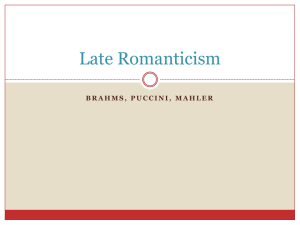
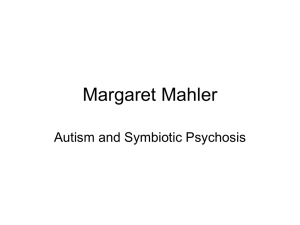
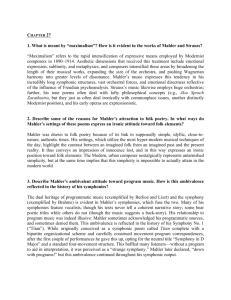
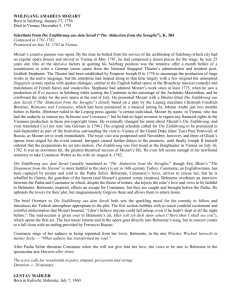
![[357] NOTES (ANMERKUNGEN)[1] Gustav Mahler was born on July](http://s3.studylib.net/store/data/007546861_2-0633dcb1969ca51a81f00783c5c4bd68-300x300.png)






